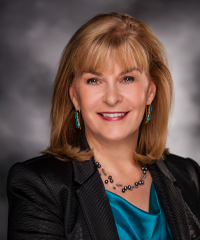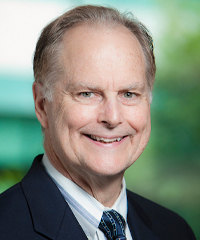Oncology
Mantle Cell Lymphoma
Recommendations for Appropriate Use of Autologous Stem Cell Transplantation in a First-line Regimen for Mantle Cell Lymphoma
Overview
Autologous stem cell transplantation (ASCT) may be a useful first-line option in younger patients with symptomatic or aggressive mantle cell lymphoma (MCL) and few or no comorbidities, yet this approach is not without risks and its role in the treatment of older patients is less clear. Our featured experts discuss the use of ASCT in newly diagnosed patients with MCL.
Q: When should ASCT be used as part of a first-line regimen to treat patients with aggressive MCL?
Brad Kahl, MD
|
|
“Although some very well-respected MCL experts generally do not recommend ASCT to their young patients because of the lack of data proving an overall survival advantage, I would say that the majority of MCL experts from around the world tend to favor intensive strategies that incorporate ASCT because of the data showing long first remissions.”
Studies that have looked at incorporating ASCT into the first-line treatment strategy have shown good outcomes for younger patients. The larger studies have been conducted in Europe, where they usually have an upper age cutoff of 65 years. Patients in some of these studies have achieved average remissions of 8 or 9 years. Remissions have tended to be shorter in those who did not receive ASCT, but these individuals were often older, so it is not always a fair comparison. I want my patients with MCL to achieve the longest, highest-quality remission possible, so I will generally recommend an intensive treatment strategy that includes ASCT to younger patients. Consider a hypothetical 56-year-old patient with MCL. If we administer an intensive induction regimen with high-dose cytarabine followed by ASCT with maintenance rituximab, we can expect that patient to achieve an average remission of approximately 8 years. This approach gives us 8 years to get a little smarter (eg, to identify new, effective drug combinations, to find new strategies) such that, when relapse does occur, we are hopefully armed with newer, even better options. ASCT in first remission is supported by data published by the European MCL Network and the Nordic Lymphoma Group, who reported significantly prolonged progression-free survival with ASCT. However, those data were obtained prior to the widespread use of cytarabine induction regimens, maintenance rituximab in first remission, and the discovery of Bruton tyrosine kinase inhibitors. The impact of ASCT on overall survival is less clear, and it is a controversial area. Many health care professionals think that ASCT improves overall survival, while others are less convinced. Although some very well-respected MCL experts generally do not recommend ASCT to their young patients because of the lack of data proving an overall survival advantage, I would say that the majority of MCL experts from around the world tend to favor intensive strategies that incorporate ASCT because of the data showing long first remissions.
Thomas J. Kipps, MD, PhD
|
|
“The success of ASCT in MCL has been largely observed in patients with very limited bone marrow involvement who have responded favorably to chemoimmunotherapy or dose intensification.”
More than half of newly diagnosed patients with MCL are over 65 years of age, and such patients may have decreased tolerance to long-term chemotherapy for reasons that may include renal impairment, cardiovascular comorbidity, and reduced bone marrow reserve. I do not particularly favor the transplant approach, and I think that its use will decline in the future. The success of ASCT in MCL has been largely observed in patients with very limited bone marrow involvement who have responded favorably to chemoimmunotherapy or dose intensification. In the setting of stage 4 disease with extensive bone marrow and hematologic involvement, obtaining autologous cells that are free of lymphoma is a major challenge. Further, responses to induction treatment are likely to be poor in those with the tumor protein p53 gene, TP53, mutation. ASCT may be a good option for some patients, but there is much room for improvement. We tend to rely on techniques that have worked well in the past, but I would like to see ASCT replaced by improved targeted therapies. One of the challenges is not knowing whether some of these newer agents will provide long-term outcomes that are similar to those we have seen with ASCT and other established therapies.
Julie M. Vose, MD, MBA
|
|
“If the response to standard chemotherapy is poor, then the response to ASCT will also likely be poor.”
I have a slightly different take on this topic, but I agree that ASCT is an old technology that will most likely be replaced by newer therapies, hopefully in the near future. In some ways, ASCT is analogous to standard chemotherapy—if the response to standard chemotherapy is poor, then the response to ASCT will also likely be poor. I have had many patients with MCL who have responded to ASCT and then relapsed 10 or 12 years later. These individuals are offered treatment with novel targeted agents or enrollment in a clinical trial. For young, symptomatic patients with MCL, I would consider rituximab plus cyclophosphamide-vincristine-doxorubicin-dexamethasone (R-hyper-CVAD) with high-dose cytarabine or a modified regimen such as the NORDIC regimen, followed by ASCT and rituximab maintenance in selected patients. ASCT should also be considered in patients who are not candidates for standard R-hyper-CVAD with high-dose cytarabine or methotrexate who may be treated with rituximab plus cyclophosphamide-doxorubicin-vincristine-prednisone (R-CHOP), R-CHOP alternating with rituximab plus dexamethasone-cytarabine-cisplatin (R-DHAP), or bendamustine-rituximab. The use of high-dose chemotherapy and ASCT for patients with relapsed MCL has not demonstrated as promising results as with frontline use. In a patient with relapsed or refractory MCL who is a candidate for stem cell transplantation, I would consider ASCT if a long first remission was achieved; otherwise, a reduced-intensity allogeneic stem cell transplantation might be appropriate.
References
Dreyling M, Lenz G, Hoster E, et al. Early consolidation by myeloablative radiochemotherapy followed by autologous stem cell transplantation in first remission significantly prolongs progression-free survival in mantle-cell lymphoma: results of a prospective randomized trial of the European MCL Network. Blood. 2005;105(7):2677-2684.
Geisler CH, Kolstad A, Laurell A, et al; Nordic Lymphoma Group. Long-term progression-free survival of mantle cell lymphoma after intensive front-line immunochemotherapy with in vivo-purged stem cell rescue: a nonrandomized phase 2 multicenter study by the Nordic Lymphoma Group. Blood. 2008;112(7):2687-2693.
Le Gouill S, Thieblemont C, Oberic L, et al; for the LYSA Group. Rituximab after autologous stem-cell transplantation in mantle-cell lymphoma. N Engl J Med. 2017;377:1250-1260.
Ogura M, Yamamoto K, Morishima Y, et al; Japan Clinical Oncology Group- Lymphoma Study Group (JCOG-LSG). R-High-CHOP/CHASER/LEED with autologous stem cell transplantation in newly diagnosed mantle cell lymphoma: JCOG0406 STUDY. Cancer Sci. 2018;109(9):2830-2840.
Widmer F, Balabanov S, Soldini D, et al. R-hyper-CVAD versus R-CHOP/cytarabine with high-dose therapy and autologous haematopoietic stem cell support in fit patients with mantle cell lymphoma: 20 years of single-center experience. Ann Hematol. 2018;97(2):277-287.













